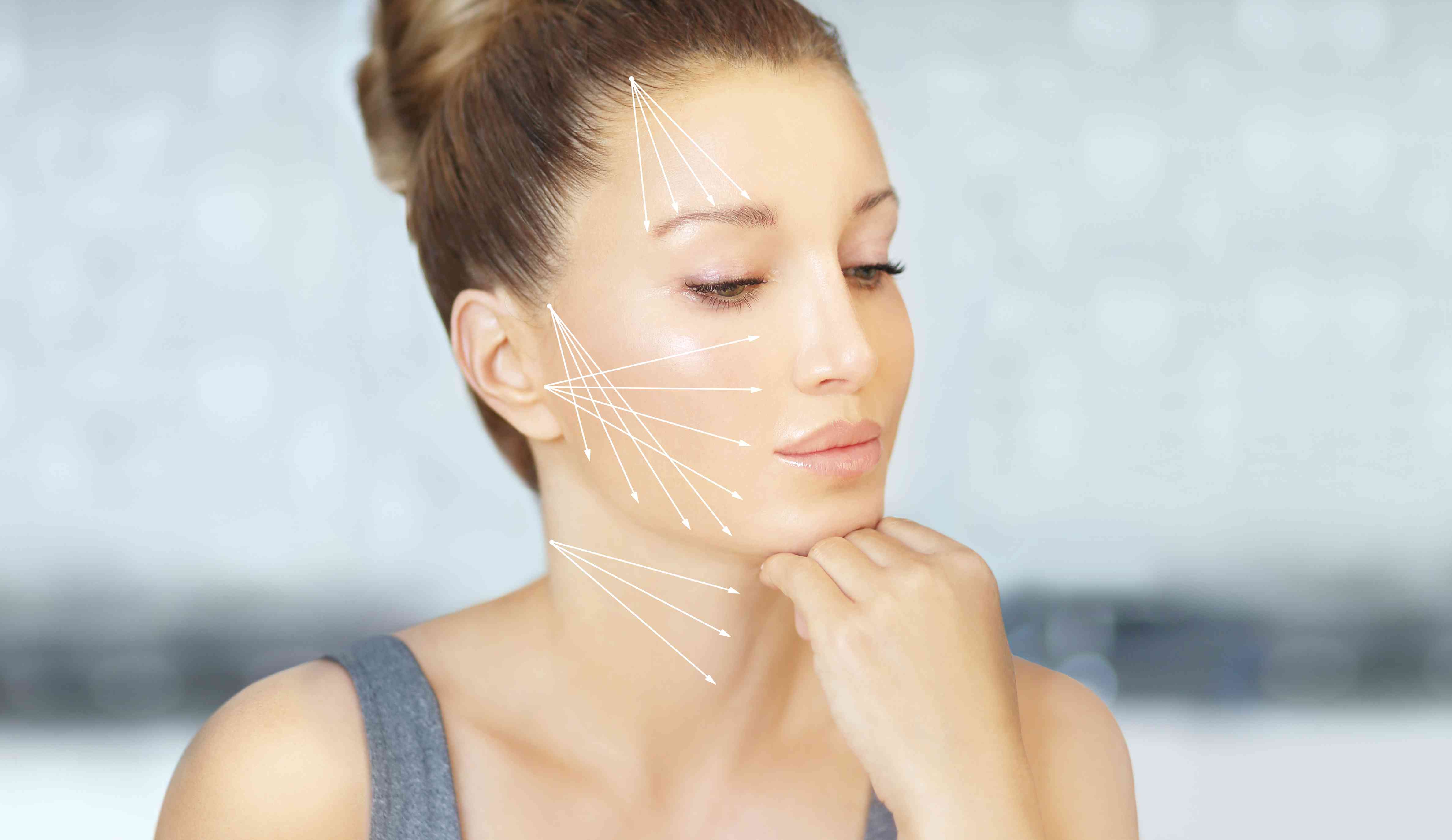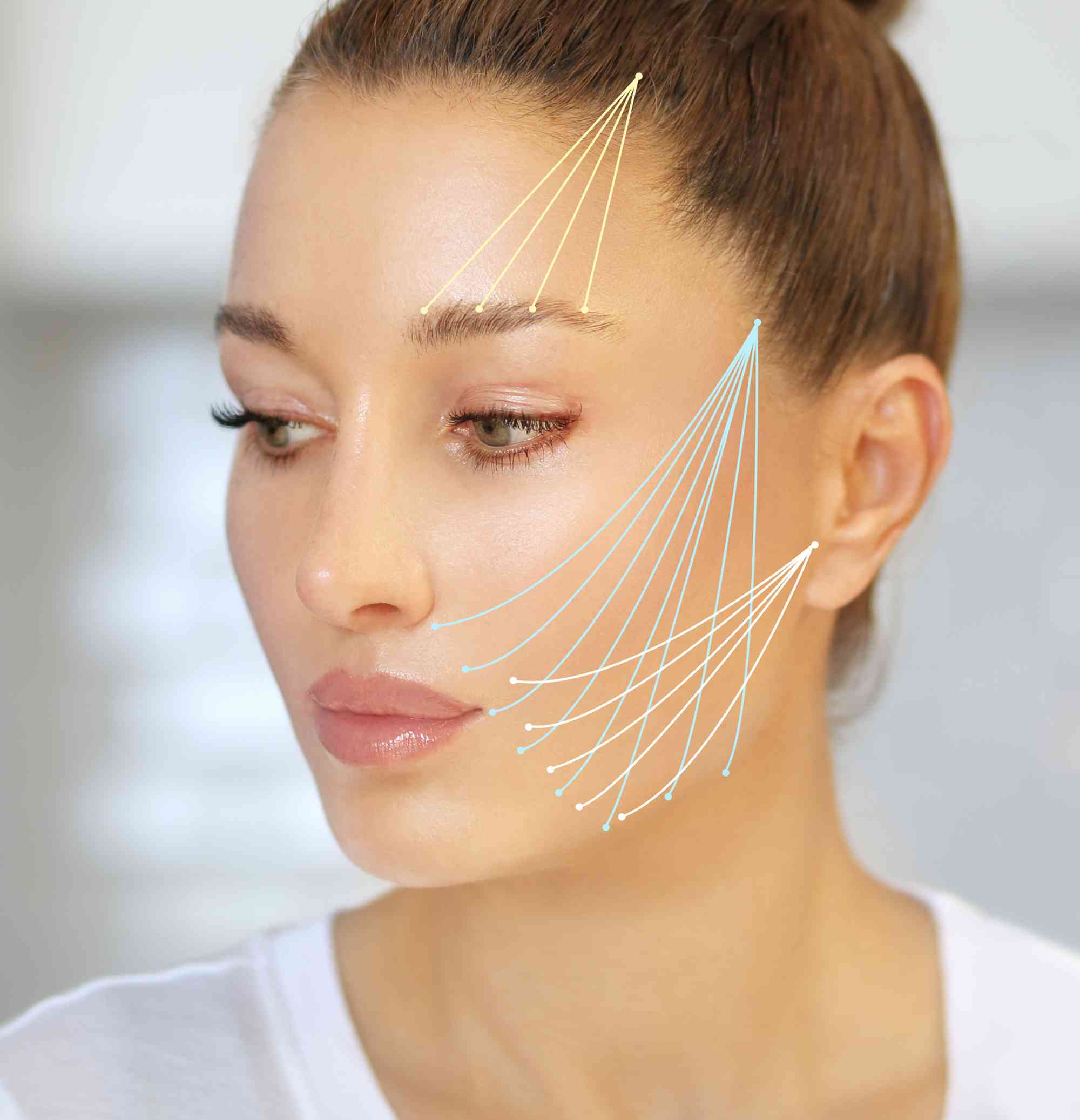
-
Doctor:
Dr. Lukesh Patil
-
Service
Face Lift with Threads
-
Tag:
Best Face Lift with Threads in Navi Mumbai
Say Goodbye to Sagging Skin
Tired of sagging skin and dreaming of a youthful, defined jawline? If you’re seeking a modern, non-surgical alternative to facelift surgery, consider a safe, effective, and budget-friendly thread facelift.
At Seraphic Aesthetics, we offer the innovative thread facelift, also known as a facelift with threads a minimally invasive procedure that lifts and firms your skin for a naturally refreshed look.
Led by Dr. Lukesh Patil, a renowned board-certified plastic surgeon, our team delivers personalized care to help you achieve a natural, refreshed appearance with minimal downtime. Join the thousands of satisfied patients who’ve trusted us with their transformation and enjoy long-lasting, youthful results.
What is a Thread Lift?
A thread lift, also known as a facelift with threads, is a modern, minimally invasive procedure that lifts and tightens sagging skin using special threads, stimulating collagen for firmer, smoother skin. With no incisions or lengthy recovery, it's a popular, non-surgical option for restoring youthful contours and achieving natural-looking results with minimal downtime.
Types of Thread Lifts
Thread lifts use two main types of threads to lift and tighten the skin:
-
Absorbable Threads: These threads dissolve naturally over time, promoting collagen production for long-lasting results. Types include:
-
PDO Threads (Polydioxanone): Known for their skin-tightening effects.
-
PLLA Threads (Poly-L-lactic acid): Helps improve skin texture and volume.
-
APTOS Threads (Polylactic acid with Polycaprolactone and Hyaluronic acid): A blend of materials that offers a more natural lift.
-
Non-Absorbable Threads:These threads remain in place for a permanent lift:
-
Spring Threads:Permanent threads that maintain the lift effect without dissolving.
At Seraphic Aesthetics, we offer these thread options to customise the treatment based on your unique needs and goals.

Ideal Candidates for Thread Lifts
A thread lift might be the perfect solution for you if you:
-
Are experiencing mild to moderate skin sagging, especially around the jawline, cheeks, or neck
-
Have good skin elasticity, which is key to achieving effective lifting and tightening
-
Are in overall good health, with no medical conditions that could interfere with the procedure or recovery process
-
Are a non-smoker, as smoking can affect healing and the final results
-
Have realistic expectations, aiming for natural, subtle improvements rather than dramatic changes
-
Are between the ages of 27 and 55 and are noticing early signs of aging
-
Prefer minimal downtime and want to avoid the risks and recovery time associated with more invasive surgeries
-
Desire a non-surgical way to rejuvenate your face, with no significant scarring
Why Choose a Thread Lift Over a Surgical Facelift?
Traditional facelifts can be invasive and involve long recovery times. If you're looking for a quick, non-surgical alternative, a thread lift offers:
-
Minimal Downtime: Unlike traditional facelifts, most people return to daily activities within a few days.
-
No Scarring: Thread lifts are performed through small entry points, avoiding the large incisions and visible scars typical of traditional surgery.
-
Collagen Stimulation: The threads stimulate your skin’s collagen production, leading to continuous improvement even after the procedure.
-
Cost-Effective: A thread lift is a more affordable option compared to full facelift surgery.
Key Benefits of Thread Lifts
-
Quick Procedure: Thread lifts can typically be completed within an hour with only local anaesthesia.
-
Repeatable: To maintain your youthful look, thread lifts can be repeated yearly.
-
Affordable: Compared to traditional facelifts, thread lifts are much more budget friendly.
-
Subtle Transformation: Achieve a refreshed, rejuvenated look without dramatic or unnatural changes.
While thread lifts are effective for many, those with more severe skin sagging may benefit more from a traditional facelift. We evaluate each patient individually to ensure the right treatment choice.
Risks and Complications
Thread lifts are typically safe, but, like any procedure, there are a few risks to keep in mind. While complications are rare, it’s important to be aware of them. During your consultation, our experienced team will go over any potential risks and answer all your questions, making sure you feel completely informed and confident in your decision.
Understanding the Cost Involved
The cost of a thread lift is typically much lower than that of a traditional facelift. However, several factors influence the price, including the treatment area, the type of threads used, and the surgeon's expertise. At Seraphic Aesthetics, we prioritise transparency. During your consultation, we’ll provide a clear, detailed cost breakdown so you can fully understand the investment involved.
Why Choose Us?
We’re committed to delivering exceptional results with the following:
- Experienced Professionals: Our team excels in advanced cosmetic treatments.
- Confidentiality: Your treatment remains private and discreet.
- Patient-Focused Care: Your comfort and satisfaction are our top priorities
- Proven Results: Our patients love their transformations, and we take pride in delivering exceptional outcomes.
Book Your Consultation Today
Take the first step to a rejuvenated look with expert facelift with threads at Seraphic Aesthetics in Navi Mumbai. Contact us now!
Frequently Asked Questions
Q: What is the average age for facelift surgery?
A: There’s no specific age limit, but most patients are between the ages of 27 and 55, when signs of aging become more pronouncedQ: How long does the procedure take?
A: Traditional facelift surgery usually takes about 2 to 5 hours, depending on the complexity. A facelift with threads, being minimally invasive, typically lasts about an hour.Q: Are facelift results permanent?
A: Facelift results can last for several years, but as the aging process continues, some changes may occur over time. Maintenance treatments can help keep your look refreshed.Q: Will I have visible scarring?
A: While facelift surgery involves incisions, scarring is generally minimal and strategically placed in areas like the hairline, around the ears, or within natural skin folds to minimize visibility.Q: How long is the recovery time?
A: Recovery time can vary, but most patients resume normal activities within 2 to 4 weeks. Complete recovery, including final healing, may take 6 to 8 weeks or longer, depending on individual healing processes.

